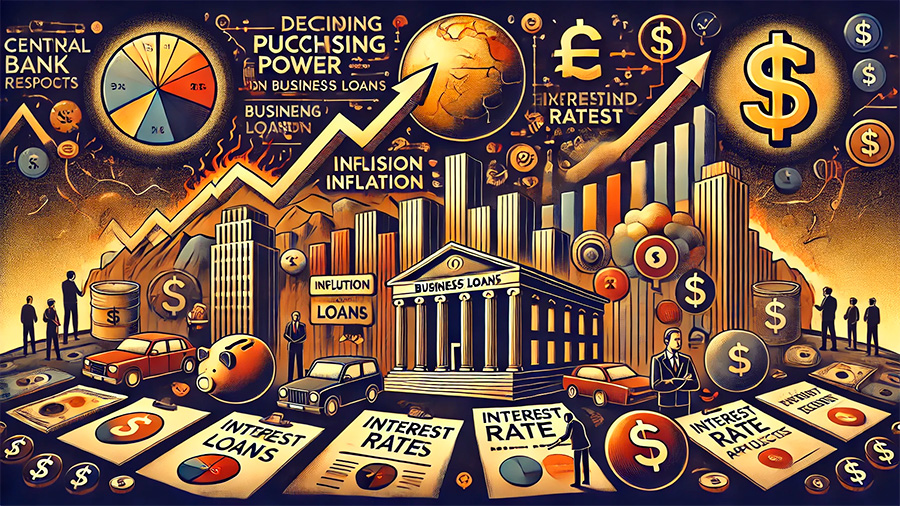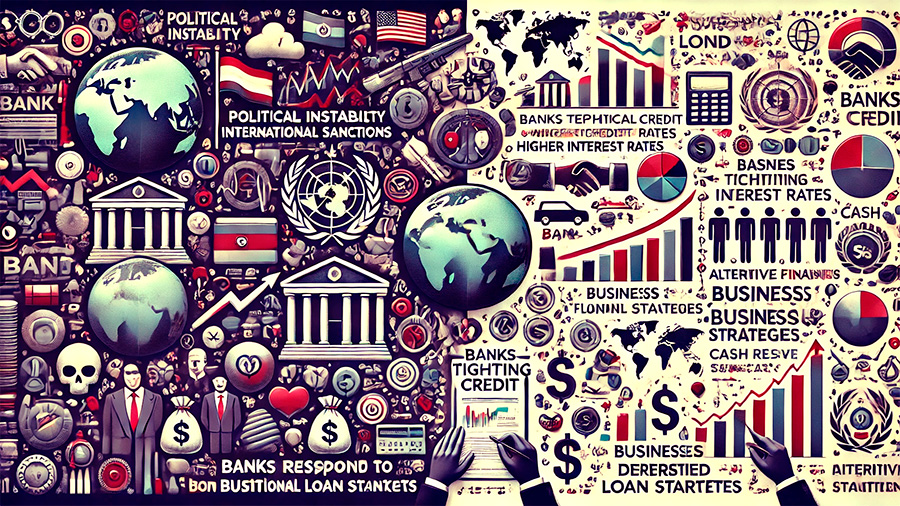
Navigating Business Loans in a Shifting Global Economy
Global economic trends play a critical role in shaping business loan markets, influencing interest rates, lending criteria, and the overall availability of credit. Economic conditions like inflation, international trade dynamics, geopolitical events, and monetary policy decisions can all impact how easily businesses can access loans and under what terms. Understanding these global trends is essential for business owners who rely on loans to manage growth, cash flow, or expansion.
Changes in the global economy can affect both the cost of borrowing and lenders’ willingness to extend credit. For businesses, this means that global economic shifts have the potential to influence everything from day-to-day operations to long-term strategic decisions. By staying informed about how international factors influence loan markets, businesses can better position themselves to secure financing when needed and plan for future financial stability.
The Impact of Interest Rates on Loan Markets
One of the most direct ways that global economic trends impact business loan markets is through interest rates. Central banks, such as the Federal Reserve in the United States, set interest rates to control inflation, manage economic growth, and stabilize financial markets. These rates, in turn, influence the cost of borrowing for businesses. When global economic conditions worsen, central banks may lower interest rates to encourage borrowing and stimulate economic activity. Conversely, in times of economic growth, interest rates may rise to prevent inflation, making borrowing more expensive.
Interest rate fluctuations have a profound effect on business loans. Lower rates reduce the cost of borrowing, making it easier and cheaper for businesses to finance expansion, purchase equipment, or manage cash flow. Higher rates, on the other hand, increase the cost of debt, potentially limiting business investment and reducing profitability. For businesses that rely heavily on loans, understanding how interest rates are influenced by global economic trends is key to managing debt efficiently.

How Inflation Affects Business Loan Availability
Inflation is another global economic factor that significantly impacts the business loan market. When inflation rises, the purchasing power of money declines, which can lead to higher interest rates as lenders seek to protect their returns. As a result, businesses may find it more expensive to take out loans, and lenders may become more cautious about extending credit.
High inflation can also impact a business’s operational costs, increasing expenses for goods, services, and wages. This can squeeze profit margins, making it more difficult for businesses to service their existing loans or take on new debt. For companies already dealing with high operating costs, the added burden of inflation-driven loan expenses can pose significant challenges.
In response to inflationary pressures, central banks may implement monetary policies to control price increases, such as raising interest rates or tightening the money supply. These measures can further impact business loan markets by reducing the availability of credit, making it harder for businesses to access the financing they need to grow or maintain operations.
Global Trade and Its Influence on Loan Markets
Global trade dynamics also play a crucial role in shaping business loan markets. Changes in international trade policies, tariffs, and supply chain disruptions can have far-reaching effects on the financial health of businesses, especially those involved in export and import activities. Trade restrictions, for instance, can increase costs for businesses that rely on foreign materials or products, impacting their ability to repay loans or secure new financing.
For businesses that operate in international markets, access to credit is often influenced by global trade conditions. When trade tensions escalate, lenders may tighten their criteria for extending loans to businesses involved in foreign markets, viewing them as higher risk. On the other hand, favorable trade agreements or a strong global economy can create new opportunities for growth and expansion, encouraging lenders to offer more favorable loan terms to businesses looking to capitalize on international markets.
The interconnectedness of the global economy means that businesses need to stay aware of international trade developments and how they may affect loan markets. For example, a slowdown in global trade can lead to reduced demand for products and services, causing cash flow issues that may make it harder for businesses to meet their loan obligations.

Geopolitical Events and Business Loan Markets
Geopolitical events, such as political instability, wars, and international sanctions, can also have a significant impact on business loan markets. When geopolitical risks rise, global financial markets often experience increased volatility. This can lead to tighter lending standards as banks and financial institutions become more cautious about extending credit during uncertain times.
For businesses operating in regions affected by geopolitical instability, access to loans can become more restricted, with lenders either raising interest rates or requiring more collateral. Even businesses located outside these regions can feel the ripple effects, as geopolitical uncertainty often causes global markets to tighten. This can result in higher borrowing costs or more stringent loan terms for businesses, regardless of their direct exposure to the event in question.
Businesses must be prepared for the potential impact of geopolitical events on their ability to secure financing. Diversifying financial strategies, including building cash reserves or seeking alternative financing options, can help businesses navigate periods of geopolitical uncertainty without becoming overly reliant on traditional loan markets.
The Role of Currency Exchange Rates in Loan Costs
Currency exchange rates are another factor influenced by global economic trends that can affect business loan markets, particularly for businesses that operate internationally. Fluctuations in exchange rates can alter the cost of loans, especially if the loan is taken out in a foreign currency or if the business has international clients and revenues in multiple currencies.
For example, a business that takes out a loan in U.S. dollars but earns revenue in a weaker foreign currency may find its debt burden increasing as the local currency depreciates. This makes it more expensive to convert earnings into the currency needed to repay the loan. On the other hand, businesses with loans in a foreign currency could benefit if exchange rates shift in their favor, reducing the cost of repaying the debt.
Exchange rate volatility adds an additional layer of complexity to loan management, particularly for businesses involved in cross-border transactions. Keeping a close eye on currency movements and using hedging strategies can help mitigate the risks associated with exchange rate fluctuations.
Preparing for Global Economic Impacts on Business Loans
Given the numerous ways global economic trends can influence business loan markets, it is essential for businesses to take a proactive approach to financial planning. By staying informed about global economic conditions and how they affect loan availability and costs, businesses can better manage their debt and make strategic borrowing decisions.
One key strategy is to maintain financial flexibility by diversifying sources of credit. Relying on a single lender or type of loan can make a business more vulnerable to changes in interest rates or lending criteria. Exploring alternative financing options, such as lines of credit, trade financing, or even government-backed loans, can provide businesses with greater stability during periods of economic uncertainty.
Another important consideration is building a financial cushion to buffer against rising costs or reduced access to credit. Maintaining strong cash reserves and managing existing debt wisely ensures that businesses can weather global economic shifts without being overly reliant on loans.
Conclusion
Global economic trends, including interest rate fluctuations, inflation, trade dynamics, and geopolitical events, have a direct impact on business loan markets. Understanding how these international factors influence borrowing conditions is crucial for businesses seeking to maintain financial stability and growth. By staying informed and planning strategically, businesses can navigate the challenges posed by global economic changes and make smarter loan decisions.
You May Also Like

The Economic Impact of Small Business Loans on U.S. Growth
April 26, 2024
